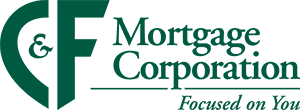We Bought a House – Now What? 6 Steps to Take Away
Congratulations – you’re a homeowner! You’ve gone through the mortgage process from start to finish, so you may be wondering what’s next now that you have the keys. Fortunately, we’ve got a list of tips that will keep you moving forward once you’ve closed on your new home – read on for all the details.
1. Review Your Mortgage Details
First, ensure you’re prepared for your first monthly mortgage payment. If you closed your loan with C&F Mortgage, we will likely collect the first mortgage payment. Your loan will be transferred to a new servicer (company to which you pay your mortgage loan payments) typically within 45 days after your closing date. You will receive monthly statements in the mail from C&F Mortgage until your loan is transferred. When your loan is transferred, you will receive notification of the transfer along with instructions as to when and where monthly payments will be due. It’s very important to make timely payments to build and maintain good credit!
2. Change the Locks
Safety is always paramount, so after closing on a new home, it’s a great idea to change out the locks as soon as possible. With all of the traffic in and out of the home while it was listed for sale, keys could have been misplaced by any number of individuals. Like you starting fresh with a new home, new locks and keys are an essential part of owning a new house.
3. Set Up Utilities
Upon closing on your new home, you’ll also want to be sure you’ve switched all utilities, such as electricity, water, gas, etc. into your name to continue service. Ideally, you can call ahead and alert the utility companies of your closing date so it can be swapped over without an interruption in service. You’ll also want to determine which phone, internet, and television provider you’d like to use and have them prepared to begin service when you’re ready to move in.
4. Determine Moving Logistics
Whether you’re planning to hire movers or rent a truck and handle it yourself, being prepared is key. Often, movers and rental trucks need to be booked weeks ahead, so the earlier you can reserve your date, the better.
5. Change Addresses
One of the most challenging parts of moving is not what you’d expect! The logistical aspects of moving can be stressful, but it’s actually what comes afterward that tends to be intimidating – changing your address with all of your accounts, bills, employers, insurance, etc. Fortunately, USPS will forward your mail for a while once you have that process set up, so if something slips through the cracks, you should be able to find it and correct the address.
6. Plan Pre-Move In Home Projects
If you have immediate plans to tackle any renovation projects in your new home, sometimes it can be easier to do these before moving in (when possible!). For example, painting walls and installing new flooring are two projects that are certainly simpler before moving all of your furniture into the home. If you’re in a position where you have time to complete projects before moving in, make sure to line everything up with your contractor or make time in your schedule if you’re handling these on your own.
Moving into a new home is a process, but taking it one step at a time is a great way to make it happen as smoothly as possible. A little bit of preparation and planning can go a long way when it comes to your homeownership journey.
At C&F Mortgage, our team of local industry experts is here for you every step of the way. From the beginning stages of searching for a house to moving into your dream home, we’re on the journey alongside you and can’t wait to welcome you home! Get in touch with our team today to get started.

